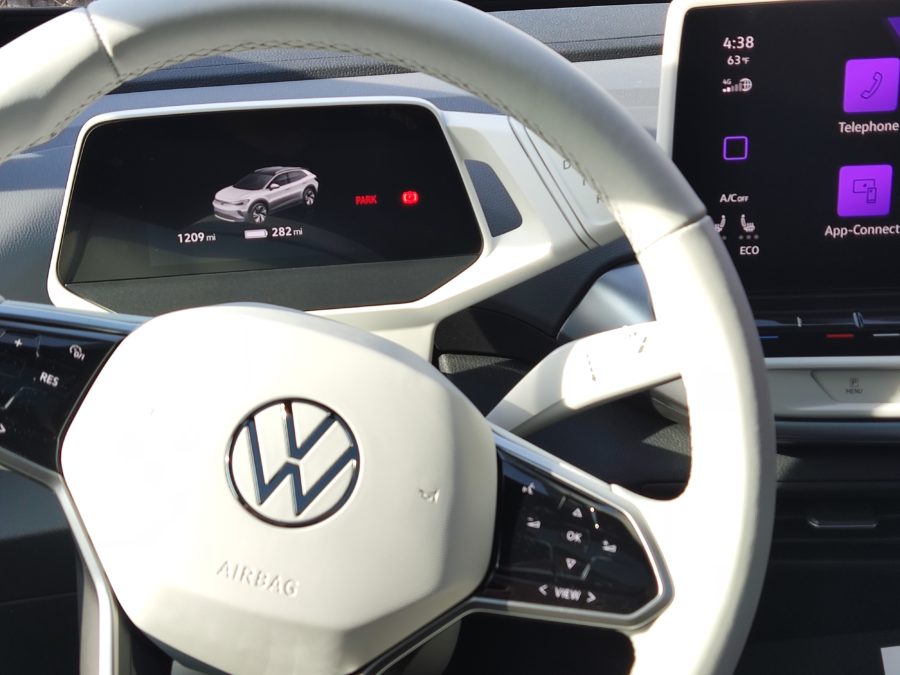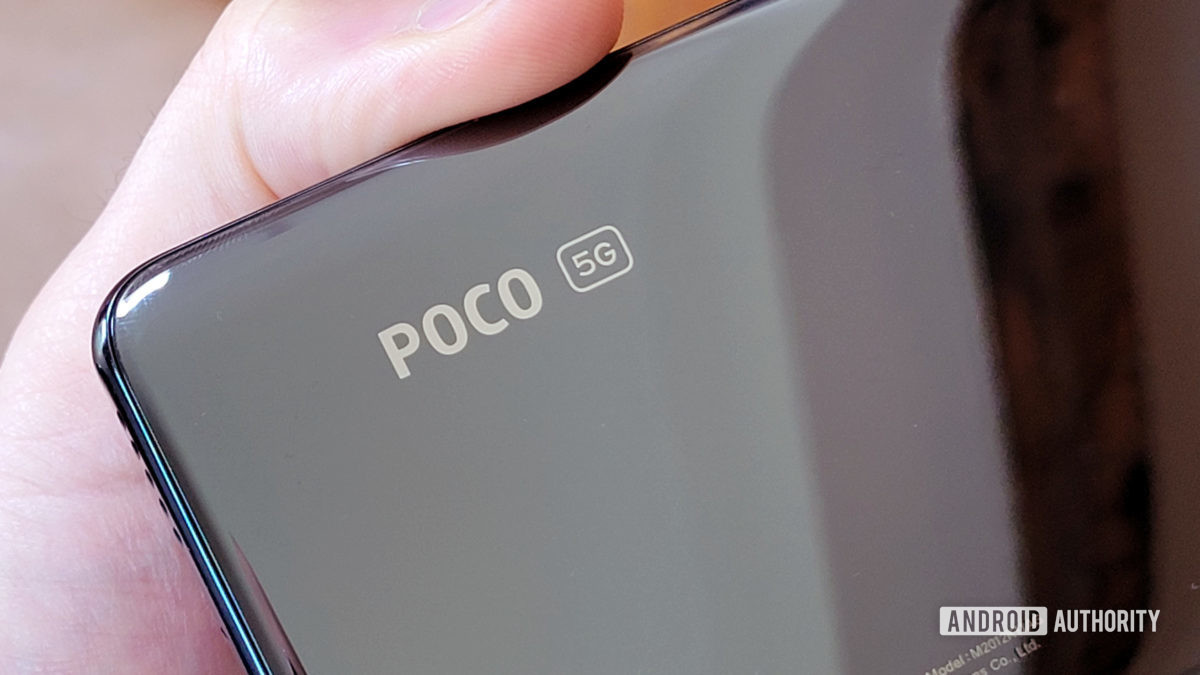Poco F3 review: Killer hardware brought down by sub-par software
The Poco F3 launched on March 22, 2021, alongside its cheaper cousin, the Poco X3 Pro. Although the Poco brand has pushed out numerous phones since the Pocophone F1 (or Poco F1 in some markets) became a smash hit in 2018, the Poco F3 is probably the closest we’ve been to a true follow-up to that debut device. It has a few of the high-end specs users want with a low price that the Poco F2 Pro could never have matched.
The problem Poco has faced over the past three years, though, is its reliance on Xiaomi. Although Poco says it’s a completely independent brand now, most of its devices are rebrands of other phones under the Xiaomi umbrella, which includes this Poco F3.
Ultimately, that reliance on Xiaomi — and Xiaomi’s Android skin known as MIUI — is holding this phone back from meeting its true potential. Find out why in Android Authority‘s Poco F3 review.
What you need to know about the Poco F3

- Poco F3 (6GB/128GB): £329/€349
- Poco F3 (8GB/256GB): £349/€399
The Poco F3 is a rebranded version of the Redmi K40 (both firms are subsidiaries of Xiaomi). Regardless of the name or the guise in which it originally appeared, the phone exists for generally one purpose: offering a few higher-end specs while cutting out most others to keep the price low. Poco describes it pretty well with its slogan: “Everything you need, nothing you don’t.”
With that in mind, the Poco F3 has some notable features that set it apart from other phones in its price range. Its FHD+ display with a 120Hz refresh rate is a big one, as is its Qualcomm Snapdragon 870 chipset. A fairly large battery, 5G support, and a good-enough camera setup are among the other features Poco wants you to notice.
Related: The best budget phones you can currently buy
Of course, it’s missing a lot of features that Xiaomi thinks you don’t need. These include wireless charging, an IP rating, an in-display fingerprint sensor, and a headphone jack. Still, at an introductory price of €349 (~$413), it’s hard to complain about most of those missing specs.
The Poco F3 is confirmed for launch in the United Kingdom and Europe. It’s expected to go on sale in April 2021. Poco has yet to confirm whether the Poco F3 will be released in India. For this review, we tested the Night Black version with 8GB of RAM and 256GB of storage. It also comes in Arctic White and Deep Ocean Blue colorways.
How is the new design?

At first blush, the Poco F3 doesn’t look or feel like a $400 smartphone. It has glass covering the front and back. The railing surrounding the phone’s edges is made of a very high-quality plastic that feels just like metal. The centered display cutout is pretty tiny — noticeably smaller than what you’ll find on even a Samsung Galaxy S21. There’s a lot about the phone’s construction that is undoubtedly premium.
There's a lot about the Poco F3's design that feels premium.
Of course, people who know a lot about the smartphone industry will be able to spot how Poco cut corners. The Gorilla Glass 5 covering the front and back, for example, is a five-year-old product. The bezels surrounding the flat display are pretty thick. The capacitive side-mounted fingerprint sensor that doubles as a power button is also a dead giveaway that this phone is no premium flagship.




Still, I quite like the design of the Poco F3. It’s not super flashy but it’s enough of a design statement that it has some personality.
The only real issue I have is that the back glass has a mirror finish — and it’s a fingerprint magnet. No matter how often you clean it, the second you touch it there will be fingerprints. Thankfully, the clear case included in the box would help solve this issue if it’s a big problem for you.
What about the display?

Without a doubt, the display on the Poco F3 is one of the highlights. At 6.67-inches, the screen is massive. It gets plenty bright at 1,300 nits peak, according to Poco. You’ll probably see something closer to 900 nits during regular use, though. Additionally, the color saturation is quite nice.
However, the stars of the show are the 120Hz refresh rate and 360Hz touch sampling rate. Combined, these features create a terrifically smooth experience as you swipe around. That high sampling rate would also be a boon to gamers, as it helps speed up the response from your screen touches.
See also: Refresh rate explained: What does 60Hz, 90Hz, or 120Hz mean?
Do note that Poco only gives you two options for the refresh rate: 60Hz or 120Hz. You can’t split the difference and go with a 90Hz rate as you can with some other phones. Also, the Poco F3 display is not capable of an adaptive refresh rate, so if you go 120Hz, it’ll try to push 120Hz all the time, regardless of screen content. This negatively impacts battery life.
As mentioned earlier, the display cutout at the top center of the screen is surprisingly small. Unfortunately, it does have a silver ring around it which makes it stand out a bit more than it would if it were surrounded with black glass, as most other cutouts are these days.
How does the Poco F3 camera perform?

In a nutshell, the Poco F3 camera functions about as well as you would expect for a sub-$400 phone. It’s not great but it’s not terrible, either. Under the best of circumstances, you’ll get good results. Under less-than-ideal circumstances, you’ll see poor results.
See also: The best budget camera phones you can buy
Let’s check out some examples, starting with this photo of my cat Lexi outside with plenty of sun. This was taken using the main 48MP shooter (you can see unedited and uncompressed versions of all photos here).

At full-frame the image looks detailed enough, but if you zoom in a bit, you’ll notice that the fur on her face starts to get pretty mushy. However, this is to be expected at this price point. Overall, though, the photo looks fine. It’s something I would have no qualms about sharing on social media.
Speaking of social media, here’s a selfie example. I was sitting near a window on a cloudy day. This pic looks fine enough for an Instagram post. I appreciate that there’s not too much beauty filter nonsense going on and the colors are fairly accurate.

Moving back to the camera on the rear, the module features a “telemacro” lens. This next photo shows off a macro shot with that sensor:

The level of detail here is actually pretty awesome. Granted, this was with the sun at my back giving me ideal lighting conditions. It’s still a bit gimmicky and the telemacro sensor’s lower resolution is noticeable, but it’s a nice result considering how throwaway macro cameras usually are in this price range.
Moving on to the wide-angle lens, here are three shots at different zoom levels. The first is 2x, the second is 1x, and the third is 0.6x, which is where the wide-angle lens takes over:



Unfortunately, the color accuracy of the wide-angle lens appears to be a bit inferior to the main lens. These photos were each taken seconds apart but look how the steering wheel is a completely different color in the 0.6x shot. Still, the wide-angle photo on its own isn’t bad at all.
Now, let’s check out the bokeh, aka portrait mode. Here are two shots compared with bokeh off and bokeh on:
 Poco F3 Bokeh Off Poco F3 Bokeh On
Poco F3 Bokeh Off Poco F3 Bokeh On

Those results aren’t bad, but Lexi has a bit of a halo around her where you can clearly tell the bokeh effect stops. Once again, this is a fine shot overall, but you can see the limitations of the camera pretty easily.
Finally, let’s examine night mode. This is where the camera completely crumbles under the pressure. First, here’s a night shot in the car with minimal street lighting:
 Poco F3 Night Mode Off Poco F3 Night Mode On
Poco F3 Night Mode Off Poco F3 Night Mode On

The difference between the night mode shot and the normal shot are subtle, which means the night mode didn’t really do much work. To put it to a really tough test, here’s another example shot taken in a very dark room:
 Poco F3 Night Mode Off Poco F3 Night Mode On
Poco F3 Night Mode Off Poco F3 Night Mode On

As you can see, the results here are very poor. You should not plan on using this camera in dark situations.
Overall, though, this camera is not terrible. As long as you don’t put it into any challenging situations, you’ll get decent enough results.
How is the battery life? What about charging?

It probably is unsurprising to hear that the 4,520mAh battery in the Poco F3 will get you through a day of heavy use without a problem. However, getting through a second day is unlikely.
In my time with the phone, I saw about five hours of screen-on-time, which is perfectly reasonable. That got me through a full day and then about half of the next. That was with 120Hz on all the time, by the way.
Related: The best phone charging accessories
I’m certain that if I switched to 60Hz and had a pair of light days as far as usage goes, I could get a full two days out of this phone. However, I wouldn’t want to sacrifice 120Hz to achieve that. Ultimately, the Poco F3’s battery life is decent, but there are phones in this price bracket that can push two days without breaking a sweat.
If you do run out of juice, there’s a 33W charger in the box with the Poco F3. Our review unit came with a European-style plug and I live in the US, so I couldn’t try it out without using an adapter. However, 33W of speed is enough to charge a battery of this capacity from zero to full in around an hour.
Unfortunately, there’s no wireless charging on this phone. But at this price point, that’s to be expected.
How powerful is the Poco F3?

The Qualcomm Snapdragon 870 chipset inside the Poco F3 is nearly the best Qualcomm model on the market today, second only to the mighty Snapdragon 888. In day-to-day use, there won’t be much noticeable difference between the two. Sure, benchmarks would prove otherwise, but the Snapdragon 870 delivers more than enough power to satiate any kind of user. It also comes with 5G support (no mmWave, but that’s not a factor in Europe) and up to 256GB of UFS 3.1 storage, although there’s no microSD slot.
Unfortunately, all that power gets kneecapped by the software included with this phone, Xiaomi’s MIUI 12. To be blunt, the software on the Poco F3 needs some serious work. I saw all manner of problems including random reboots, disappearing/reappearing notifications, and even an unsolicited switch from a 120Hz refresh rate to 60Hz. Additionally, the brightness drops dramatically as the phone gets heavy use, which is really annoying.




When you add that to the in-system advertisements as well as the subjectively unappealing iOS-like stylings overlaid on top of Android, you get a poor software experience.
All of the Poco F3's raw power gets kneecapped by the buggy, messy software.
What’s so annoying about MIUI is its inconsistency. On some devices, such as the Mi 11, the software is terrific. On others, such as this Poco model, it’s the opposite of terrific. This heightens the appeal of competitor brands that offer a software experience that’s the same across all models. This isn’t even a flagship vs budget phone issue, either — we found the Poco M3‘s software experience to be far from perfect, but it was a leap above what’s on offer here.
The bottom line is that the Poco F3 is powerful only on paper. In actual use, the software holds it back from reaching its true potential.
Anything else?

- Bluetooth: I saw terrific Bluetooth audio performance with the Poco F3. I was able to walk around my apartment while leaving my phone on my desk and barely heard so much as a skip.
- Speakers: There are two speaker grilles: one on top and one on the bottom. This enables a loud audio experience with true stereo sound. The audio could use a bass boost, but that’s almost always a problem with smartphone speakers. All in all, though, the audio from this device is great.
- In the box: Inside the box of a Poco F3, you’ll find a clear case, a 33W charger, a USB-C cable, and a 3.5mm dongle. That last item is a nice touch.
- Fingerprint reader: The capacitive fingerprint sensor that doubles as a power button is astoundingly fast. Pretty much every time I touched it, the phone would instantly turn on. I was very impressed.
- Video: Capturing video with the Poco F3 is about as good as capturing images: fine under ideal conditions, poor under anything challenging. You can choose between 720p/30fps, 1080p/30fps, 1080p/60fps, or 4K/30fps. The default is 1080p/30fps. You can film using any of the three lenses and there are some cool settings like audio zoom and an anamorphic crop. However, be careful with how you hold the phone, as the bottom microphone is super sensitive and every brush of your palm creates heavy noise.
- Ads: I did see ads while using the phone. Most of the time, they would appear after installing a new app. I also saw a few Poco/Xiaomi ads pop up in my notifications. These were annoying but not as obtrusive as I expected and didn’t show up elsewhere in the UI unlike some equivalent Redmi devices.
- MIUI design: I don’t know if they are bugs or features, but I faced many usability issues with MIUI. For example, when getting a Google reminder in my notification drawer, the “Done” button on the notification was small and hard-left-aligned. Because of this, I was only able to hit it accurately 50% of the time. The other 50% would open up the notification within Google Calendar. This was really annoying. There were lots of little annoyances like that during my time testing the phone.
- Bloatware: There are a ton of pre-installed apps on this phone. Amazon, LinkedIn, Netflix, PUBG Mobile, and on and on. Additionally, there are a lot of Xiaomi/Poco apps. Thankfully, a lot of these can be uninstalled.
Poco F3 specs
| Poco F3 | |
|---|---|
| Display | 6.67-inch AMOLED FHD+ (2,400 x 1,080) 120Hz refresh rate 360Hz touch sampling rate HDR10+ Gorilla Glass 5 |
| Processor | Qualcomm Snapdragon 870 |
| GPU | Adreno 650 |
| RAM | Min: 6GB LPDDR5 Max: 8GB LPDDR5 |
| Storage | Min: 128GB UFS 3.1 Min: 256GB UFS 3.1 No microSD card support |
| Power | 4,520mAh battery 33W fast wired charging In-box 33W charger No wireless charging |
| Cameras | Rear: 1) 48MP main 1/2-inch sensor, 1.6μm, ƒ/1.79 Auto-focus 2) 8MP ultra-wide 119-degree FoV, ƒ/2.2 3) 5MP "telemacro" Auto-focus (3cm - 7cm), ƒ/2.4 Front: 1) 20MP, ƒ/2.45 |
| Audio | Dual speakers Dolby Atmos No headphone jack |
| Connectivity | USB-C Dual-SIM Wi-Fi 6 Bluetooth 5.1 NFC support IR blaster |
| Bands | 2G: GSM: 850, 900, 1,800, 1,900MHz 3G: WCDMA: 1/2/4/5/8 4G: LTE FDD: 1/2/3/4/5/7/8/12/17/20/28/66 4G: LTE TDD: 38/40/41 5G: n1, n3, n5, n7, n8, n20, n28, n38, n41, n77, n78 |
| Security | Side-mounted fingerprint sensor Face unlock (insecure) No IP rating |
| Software | Android 11 MIUI 12 for POCO |
| Dimensions and weight | 163.7 x 76.4 x 7.8mm 196g |
| Colors | Arctic White, Night Black, Deep Ocean Blue |
Value and competition
As with the original Poco F1, the price of the Poco F3 is one of its standout features. Simply put, you are getting some incredible hardware for very little cash.
Ultimately, the overall value of this phone will depend on what is most important to you. The Poco F3 offers a high-end processor, a terrific display, and a good build. It lacks a solid software experience, a great camera, and super-long battery life, though. If you value those last three items, there are other phones out there at a similar price point that will deliver.
See also: The best phones under £500 in the UK
At the same entry price as the Poco F3, you have the just-launched Samsung Galaxy A52. It would offer a better software experience with more frequent updates and assurance of three years of Android upgrades. It also offers an IP67 rating, expandable storage, and a headphone jack. However, it only has a 90Hz display refresh rate and lacks 5G access, not to mention that Snapdragon 870 chipset.
If you’re willing to spend a bit more, the Google Pixel 4a 5G offers 5G support (naturally) as well as the brilliant Pixel UI software. It will receive years of Android upgrades and has some of the best camera software available on any phone. Once again, though, you’ll miss out on the fast processor and high refresh rate display.
Poco F3 review: The verdict

On paper, the Poco F3 seems too good to be true. A super-fast chipset paired with an incredible display wrapped in a premium-feeling chassis for €349? How is that even possible?
Unfortunately, you find out which corners got cut as soon as you’re introduced to the phone’s software, which is buggy and messy. Granted, software updates could fix many of the problems I discovered. But Poco doesn’t have the best track record when it comes to keeping its phones up-to-date.
The Poco F3 has an awesome display and a powerful chipset. But they don't mean anything without good software.
Our verdict here is that this phone would be great for people who prize processing power and display quality over anything else. Specifically, that would mean gamers and heavy multitaskers. For people who don’t fit those categories, we’d suggest skipping this phone. Instead, grab a similarly priced less-powerful phone from manufacturers with better software and better track records for addressing issues within that software. That means Samsung, Google, or even OnePlus if you’re in a market where the OnePlus Nord is available.
That all being said, this phone shows the promise of Poco. If the company could really break away from Xiaomi and create its own unique software experience, it could become a titan in the mid-range market. As it stands now, though, the company is relying too much on specs and not enough on delivering a quality overall experience.
source: https://ift.tt/3cB2rWb
https://ift.tt/2PLdeo1
Comments
Post a Comment